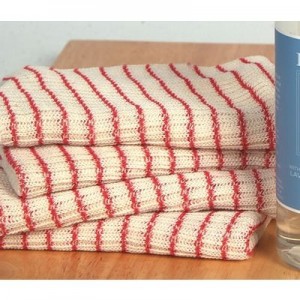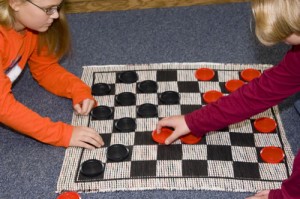Start Your Seedlings in 12 Easy Steps
Many gardeners seem to be intimidated by the idea of starting their own plants from seed. Most people I know have always gone to the garden shop to buy their seedlings in Spring. But, what if I told you that starting seeds is literally so easy a child could do it? And not only that, it’ll save you a ton of money as well! Not to mention that you’ll be able to grow any variety you fancy, and won’t be limited by what’s available in your area.
Follow these 12 easy steps, and you’ll never have to buy another costly nursery plant again!

You’ll need:
- Seeds
- Gloves
- Seed Starting Containers
- Seed Starting/Planting Medium Mix
- Water
- Plastic tray
- Plastic bag
- Light (either natural light or a fluorescent grow light, available at hardware stores)
- Potting Mix (for transferring seedlings to pots after germination and sprouting)
- Make sure your containers have several holes in the bottom for good drainage. My favorite seed starting containers are clean individual sized yogurt cups. Using a hammer and nail, I puncture two or three holes in the bottom of each cup.
- Put on your gardening gloves! You shouldn’t handle the seed starting/planting medium barehanded. Now, fill each cup to just below the rim with a good quality seed starting mix. DO NOT use potting mix! Big difference.
- Thoroughly moisten the planting medium in each cup. I like to use my sink sprayer to soak my filled cups really well, and then let them sit in the sink to drain any excess water out before planting. The seed starting mix should be moist throughout, but should not have any water standing on the surface.
- Now you’re ready to plant your seeds!

Dragon’s Tongue Bean Seed The planting depth depends on the size of your seeds. As a general rule, you plant three times deeper than the thickness of the seed. For instance, if you are planting a large bean that is ½†thick, it should be buried about 1 ½†deep.If your seeds are very tiny, like onion seeds, it is best to broadcast them over the surface of your planting mix, then cover them with a very light layer of the seed starting mix. Some seeds need to be pre-soaked before planting, so always read the directions on the back of the seed packet for more info.
- As you are planting your seeds, make sure to label the containers so that you don’t forget what you’ve planted there! You might also put the date on the label, so you can keep track of how old the seedlings are.
- Once your cups are all planted, you’ll want to put them in a tray of some sort. This will make them easier to carry around, and will also enable bottom watering- which is the best way to water your tender seedlings. I like to reuse deli trays and lids for this purpose. I’ve also used metal pans. As long your container is big enough hold your starter cups and deep enough to also handle one-half inch of water, you’ll be fine.
- Slide your tray filled with cups into a plastic bag. Ziplocs work really well, but a plastic grocery bag works fine also. This will create a mini greenhouse effect, and will enable the seeds to germinate more quickly. Do not completely seal the bag closed, as you do want to encourage air circulation.
- Place the tray (which is now inside a bag) in a warm, dark place, such as on top of your fridge. After two days, check your cups daily for any signs of growth. As soon as a seedling has emerged, remove it from the bag and place it in a sunny window, or under a fluorescent grow light. If using a grow light, keep the plant about 2†from the fixture. Expose the plants to light 14 to 16 hours per day.
- Be sure to keep the planting medium slightly moist. If your seedlings get too dried out, there’s no bringing them back. However, do not overwater them either, as this will kill them just as quickly. I usually water every few days, touching the surface of the soil to see if it’s moist. When it feels dry, I add about ½†– 1†of water to the tray the cups are sitting in. The plants will soak up what they need. This is the ‘bottom watering’ technique mentioned earlier.
-

Use The Pot Maker with newspaper to create biodegradable pots. Once your plant has developed its “true leavesâ€, use a pair of scissors to gently snip off the first set of leaves. You want the plants energy going into true growth, and not wasted on these excess leaves.
- When your seedlings have grown 4-6 true leaves, it is time to re-pot them. This time you will fill a slightly larger container with Potting Mix, and transfer your seedling to its new home. DO NOT re-pot into seed starting mix.
- Â About a week before you are ready to transplant the seedlings into the garden, begin the hardening off process. Set your plants outdoors in gradually increasing increments every day, starting with an hour outdoors, allowing them to get acclimated to being outside. This will help you avoid shocking the plants, and killing them. Work up to exposing your plants to the outdoors for 6 hours at a time before transplanting into the garden.
From there you plant your seedlings the same way you’d plant those purchased from the garden center.
Yes, it’ll take a bit more time and commitment than buying ready-to-go seedlings. But as I mentioned above, you’ll save a ton of money starting seeds yourself, and you’ll be able to grow all sorts of varieties which wouldn’t otherwise be available to you!
If you’ve never started your own seeds before, I challenge you to give it a shot. Make it a family affair; adults and kids of all ages will enjoy watching their little seedlings grow!






























